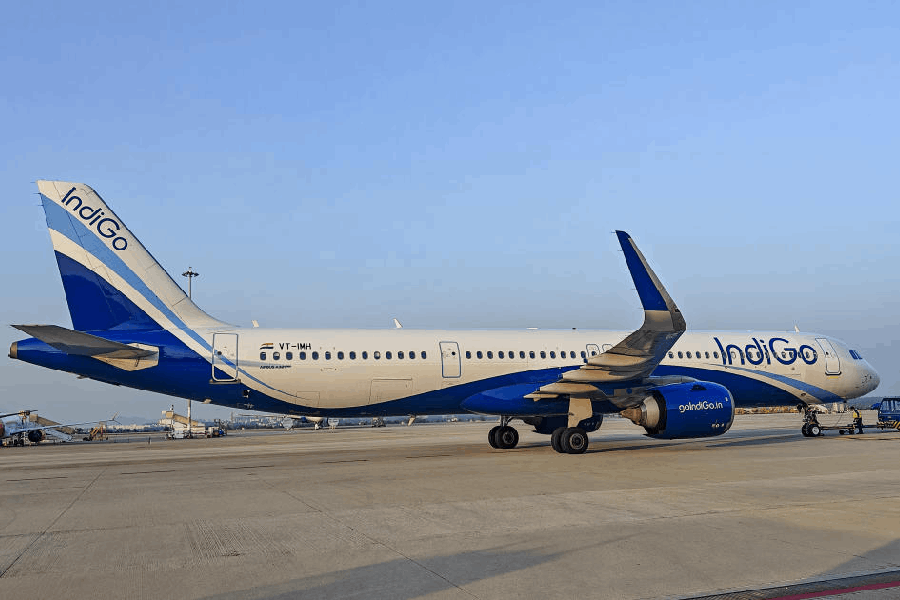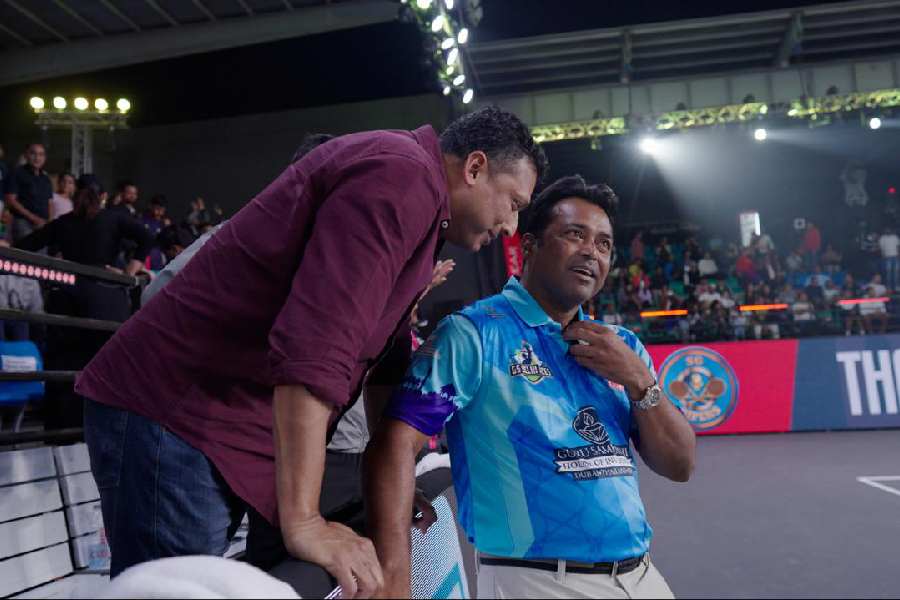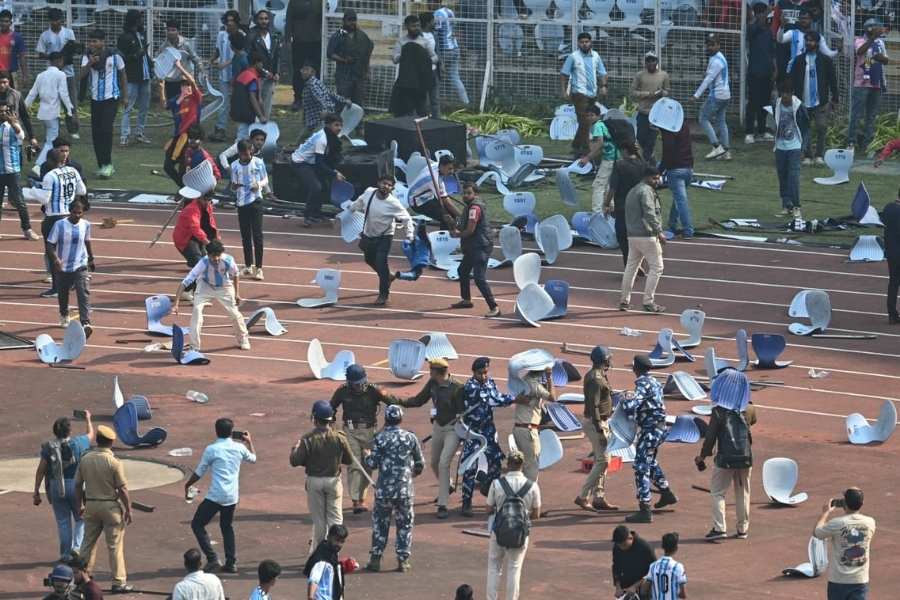Digital detox
Sir — Machines, it seems, can lose their reasoning skills just like their human counterparts. A study found that large language models exposed to posts from X became less logical, more narcissistic, and harder to fix with cleaner data. It seems machines are learning human habits a little too well. The idea that an AI can become cranky, ill-informed, and self-absorbed is strangely comforting. It means that instead of plotting global domination, machines may be busy arguing about celebrity gossip and politics. That may be the most human outcome of all for the Artificial Intelligence revolution. Perhaps the next breakthrough in technology should be a means to ensure collective digital detox for everyone — man and machine.
Romana Ahmed,
Calcutta
Twin process
Sir — The Nobel prize in economics highlights the concept of creative destruction as central to innovation-driven growth (“Creative destruction”, Oct 28). The recognition given to Joel Mokyr, Philippe Aghion and Peter Howitt underscores how new technologies replace old ones, generating long-term economic expansion. On the one hand, this is encouraging because it emphasises that progress is not automatic but requires institutions, open markets and incentives. On the other hand, it raises concern because the process of destruction means displaced firms, jobs and skills unless compensatory measures are in place. What this really means is that growth and disruption often come as a twin package.
Aayman Anwar Ali,
Calcutta
Sir — The notion that innovation fuels growth through the systematic replacement of old processes is well supported by the recent Nobel in economics. Joel Mokyr’s work explains how culture and institutions lay the groundwork for change, while Philippe Aghion and Peter Howitt formalise the dynamic of new firms challenging incumbents. That is important because modern economies must innovate to maintain competitiveness. At the same time, the theory warns that entrenched incumbents and weak competition can block renewal. For a country like India, the lesson is clear: reform and openness matter if innovation is to be sustained and inclusive. Policy must therefore address the social costs of transformation while preserving the incentives for renewal.
Ireima Imsong,
Imphal
Risky partnership
Sir — The memorandum of understanding between India’s Hindustan Aeronautics Limited and Russia’s United Aircraft Corporation to produce the SJ-100 passenger aircraft in India is a significant milestone. It signals the revival of domestic, full-scale, passenger-aircraft manufacturing after decades of relying on imports. That is promising because it could boost regional connectivity and job creation. However, it raises questions about reliance on a Russian firm under international sanctions and about whether the technology and supply-chain risks have been fully assessed. The deal’s success will depend on execution.
Tharcius S. Fernando,
Chennai
Sir — India’s civil aviation industry stands to gain materially from the HAL-UAC tie-up for the SJ-100 since the agreement grants HAL manufacturing rights for the domestic market. That is critical because India estimates demand for over 200 regional jets in the next decade. Yet it may also carry strategic risks: UAC is under sanctions by the United States of America, the United Kingdom and the European Union and disruptions in its supply chain could affect the project. India’s decision to proceed reflects its independent foreign policy stance. But the business implications warrant close scrutiny.
Tapomoy Ghosh,
East Burdwan
Sir — HAL’s partnership with UAC could reinvigorate India’s regional-connectivity push and reduce dependence on foreign airframes. That is in line with policy goals and could fill an unmet need in underserved routes. On the flip side, the choice of partner and aircraft may complicate India’s relations with other aircraft-suppliers and entail geopolitical trade-offs. Furthermore, the SJ-100 has had issues in the past related to parts and sanctions. India must ensure the supply-chain is resilient and diversified before banking fully on the programme.
Aranya Sanyal,
Calcutta
Slow progress
Sir — The latest State of Climate Action report confirms what was already evident: progress under the Paris Agreement is steady but painfully slow. Renewable energy now supplies half the world’s electricity, yet coal use continues to rise. This contradiction exposes the gap between ambition and appetite. Unless countries treat fossil fuel reduction as seriously as renewable expansion, emissions will keep climbing. Growth in green investment is welcome but it is still outpaced by delay and complacency. The window for meeting the 1.5°Celsius goal is closing fast.
Ratna Datta,
Calcutta
Sir — Ten years after the climate conference in Paris, the story is of mixed progress: cleaner grids but dirtier politics. Leaders promise green transitions while subsidising coal and oil to appease domestic lobbies. Net-zero timelines mean little if investment flows in the opposite direction. The upcoming Conference of Parties in Brazil must focus on accountability, not applause. Targets are worthless without enforcement.
Haridasan Rajan,
Kozhikode
Sir — Public discourse often overlooks the simple truth that climate progress is cumulative. A decade of small victories counts. The urgency remains, but despair helps no one. What the world needs now is persistence — the most underrated renewable resource of all.
Manzar Imam,
Mumbai










